Black Heritage Tourism: Mapping the Way Forward
5 destinations that are shaping cultural change by telling America’s essential Black history
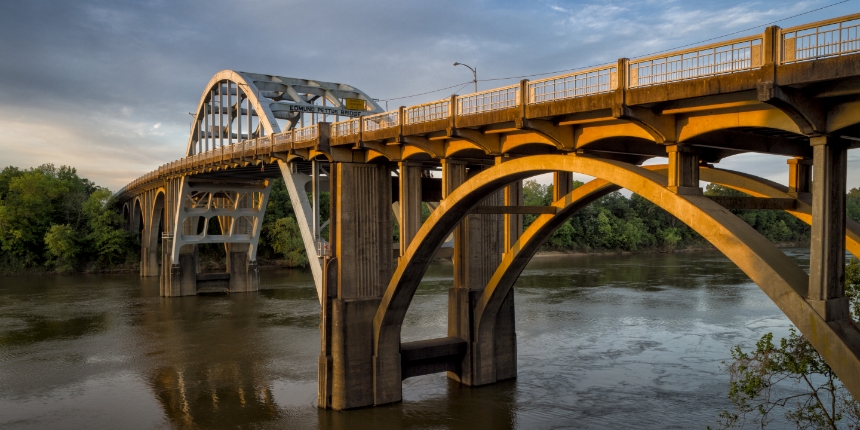
A motorcoach pulls up to the exact spot in Montgomery, Ala., where Rosa Parks boarded a bus and refused to give up her seat to a white man, sparking the Montgomery Bus Boycott—a pivotal moment in the Civil Rights Movement. The students on the motorcoach murmur to one another as a Black woman climbs aboard and asks, “Is this the Cleveland Avenue bus?”
As the scene plays out, the students are convinced they’re seeing the real Rosa Parks, even though the tour guide later tells them she’s an actor named Ann Clemons.
Later, the students explore the Dexter Avenue Baptist Church, the birthplace of the boycott. As they file out, a flash mob descends on them, with peaceful protesters on one side and agitators on the other. Which side will the students choose? “Of course, most of them choose the peaceful side,” says Alabama Civil Rights Trail Director Rosemary Judkins. “They then walk arm and arm with the group to the foot of the Capitol steps, singing ‘We Shall Overcome.’”
This immersive experience is just one example of Black heritage tourism—the exploration of historical sites, landmarks, museums, and communities that highlight the contributions, struggles, and cultural legacy of African Americans.
The Rise of African American Heritage Travel
According to Black Meetings & Tourism magazine, there is a pronounced interest in African American heritage among travelers. “Black culture and heritage attractions are desired by 36 percent of the U.S. traveling population, including travelers of all races and ethnic backgrounds,” the publication states, citing a report by Mandala Research. Adds Meg Griffith, media relations manager at Visit Detroit, “A recent travel trend we’re seeing is visitors looking for real experiences, learning through storytelling, understanding, and gaining a perspective of the destination.”
African American heritage travel is important for both Black and non-Black travelers, says Natalie Preddie, award-winning travel writer and TV host. Preddie traveled with her father to Birmingham to experience the progress and healing that has happened in the city since the Civil Rights Movement, and wrote about the trip for Elle Canada.

“Black history is American history,” says writer Natalie Preddie of her visit to the 16th Street Baptist Church in Birmingham, Ala. “To disconnect the two is just wrong.”
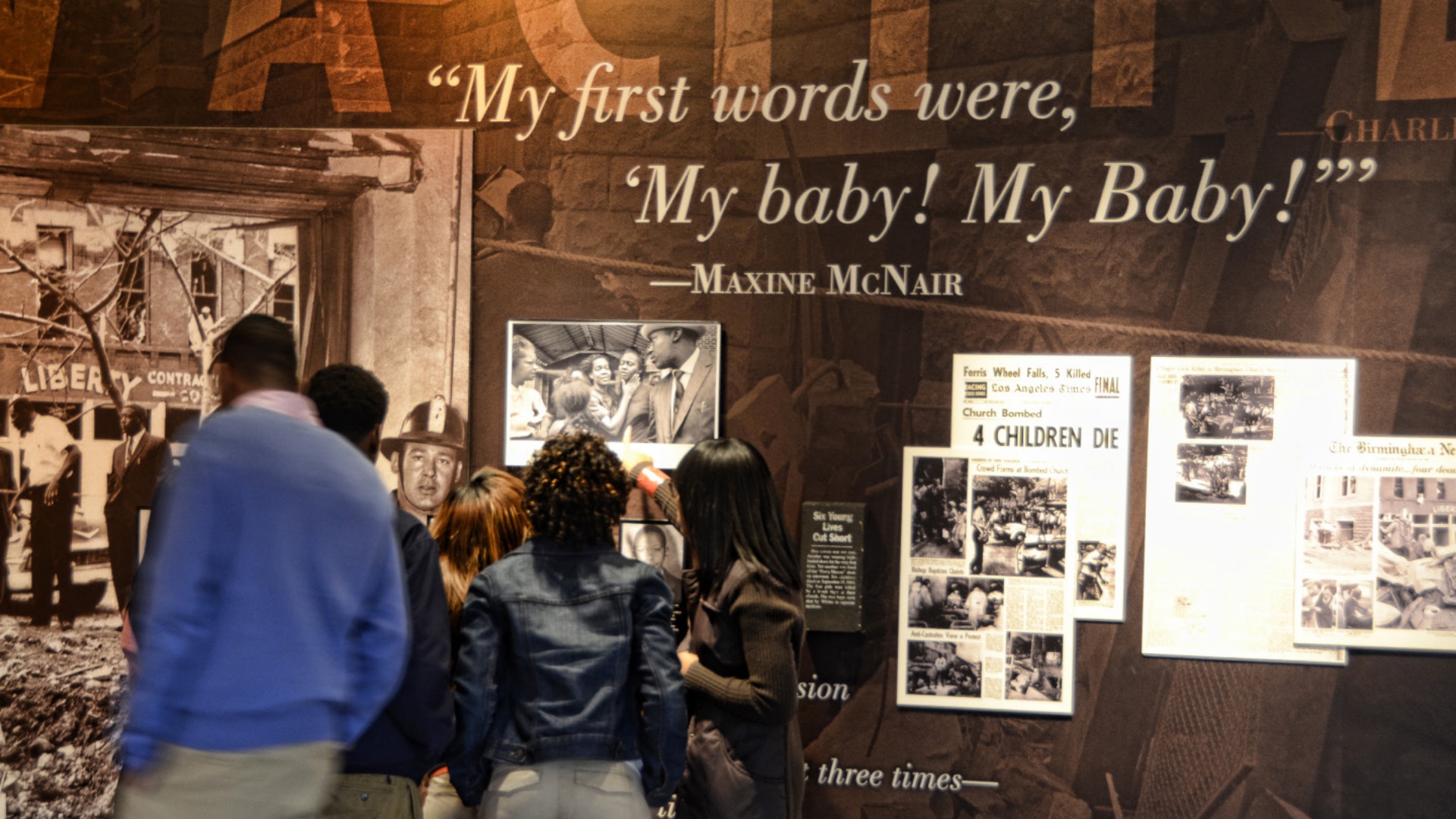
Exhibits at the Birmingham Civil Rights Institute explore the Civil Rights Movement and address human rights globally.
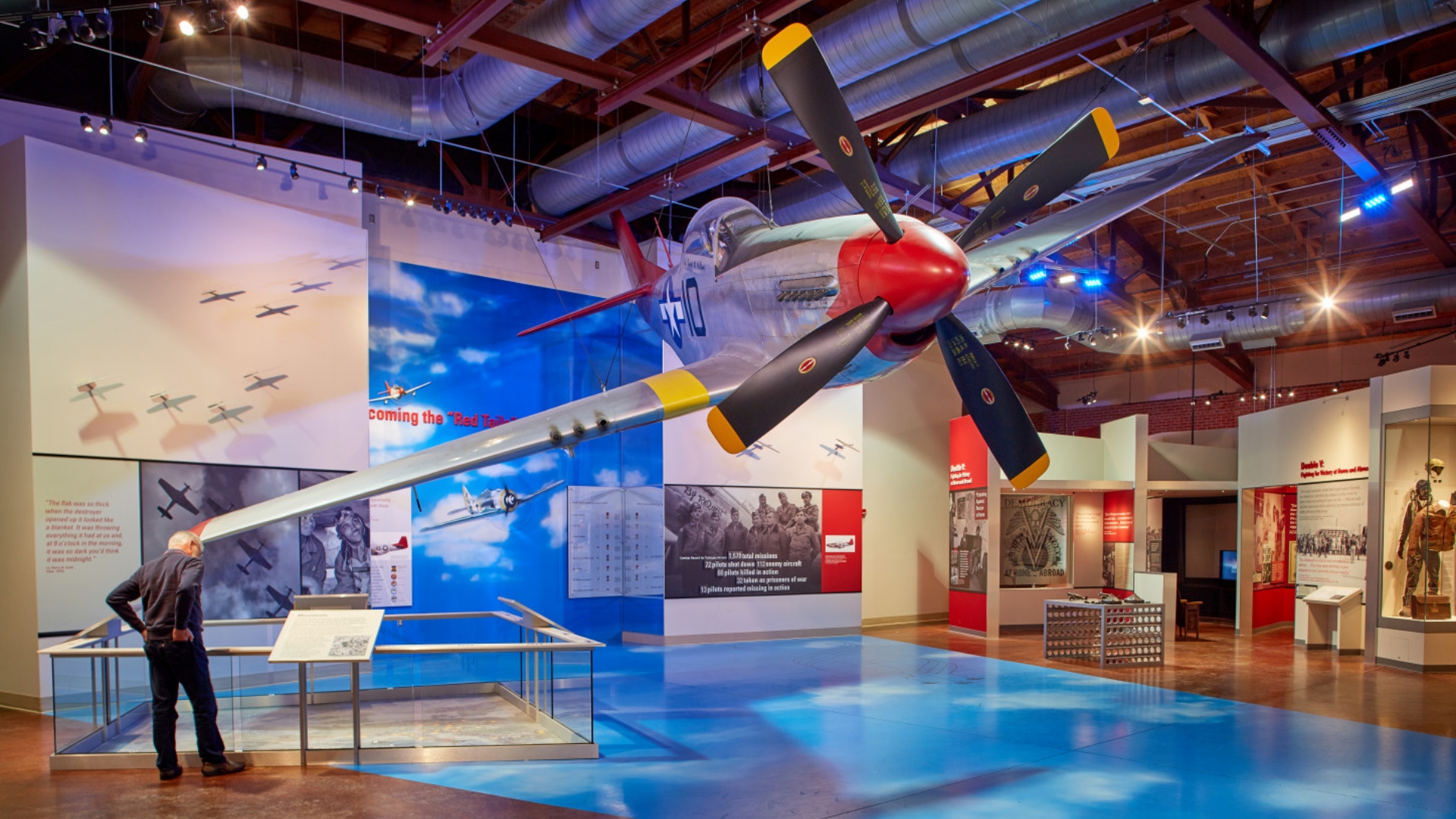
The Tuskegee Airmen National Historic Site tells how the African American pursuit squadron became one of the most highly respected fighter groups of World War II.

The Martin Luther King Jr. Memorial opened to the public in 2011 and is the first memorial in Washington, D.C., to honor a man of color.
“The Black leisure traveler is looking for three things: a cultural connection, to support Black business, and to learn their history,” she says. “For non-Black travelers, I think there’s an awareness that it’s important to know and understand history and the parts their ancestors played in these moments so we don’t repeat them—because, like fashion, history is cyclical.”
Destinations across the country are telling the story of America’s essential Black history through their attractions and tours. And whether you are a tour operator planning a heritage tour or a destination looking to expand your cultural offerings, there are hundreds of American Bus Association members that would be great additions to your itinerary. For this article, we’ve asked the teams at the Alabama Tourism Department, Greater Birmingham Convention and Visitors Bureau, Visit Detroit, Destination DC, and New York State’s Division of Tourism/I LOVE NY to tell us how they are mapping the way forward in shaping cultural change.
U.S. Civil Rights Trail
The U.S. Civil Rights Trail is a journey through the most significant landmarks of the Civil Rights Movement—and the brainchild of Lee Sentell, director of the Alabama Tourism Department. “It started out in 2016 as the Alabama Civil Rights Trail, our listing of the landmarks across the state,” he says. The following year, tourism departments from several Southern states collaborated to expand the effort, using Alabama as their model, resulting in the creation of the U.S. Civil Rights Trail.
The churches, courthouses, schools, museums, leaders’ homes, and other landmarks of the U.S. Civil Rights Trail stretch across 15 states. “We put a robust set of criteria in place,” says Judkins. “It has to be a site where something happened or where a famous person lived.”
According to Sentell, a 10-year process to nominate civil rights landmarks as UNESCO World Heritage sites advanced last year when the Secretary of the Interior added the Lincoln Memorial—along with a dozen other sites on the Trail—to the Tentative List. A vote by World Heritage board members is expected in 2027.

Download a PDF itinerary of the full tour of the U.S. Civil Rights Trail in Alabama.
Washington, D.C.: A National Platform for Equality
Washington, D.C., offers many sites along the U.S. Civil Rights Trail, including the Lincoln Memorial, where Martin Luther King Jr. delivered his “I Have a Dream” speech during the March on Washington in 1963. “It’s one of the few memorials on the National Mall that’s dedicated to a private citizen,” says Elliott L. Ferguson II, president and CEO of Destination DC.
Another stop for groups on the Trail is the Martin Luther King Jr. Memorial. Situated along the Tidal Basin, it features a 30-foot statue of King sculpted from granite. Inscribed with quotes from his speeches, the memorial reminds groups of his enduring impact on American society and the global fight for human rights.
Alabama: A Legacy of Change
Birmingham, Ala., is home to several stops on the Civil Rights Trail. Sara B. Hamlin, CTIS, vice president of tourism at the Greater Birmingham Convention and Visitors Bureau, suggests that groups start at Bethel Baptist Church. This church, which was bombed three times by white supremacists, was the headquarters for the Alabama Christian Movement for Human Rights. Next, she recommends the 16th Street Baptist Church, where a bombing by the Ku Klux Klan claimed the lives of four young girls in 1963—which played a critical role in the Civil Rights Movement.
Adjacent to the church, Kelly Ingram Park served as a central stage for protests and demonstrations. The park is an open-air museum whose sculptures and installations depict the struggles faced by activists, including police brutality and the bravery of the children who participated in the movement. “Young people marched in the streets from the park and the 16th Street Baptist Church,” says Hamlin.
While the nearby A.G. Gaston Motel is not on the U.S. Civil Rights Trail, Hamlin recommends it as a stop for groups. “The motel was built in 1954 by Arthur George Gaston, a businessman who became the first Black millionaire in Alabama,” she says. The motel provided lodging, entertainment, and food for Black travelers, including Martin Luther King Jr., and served as the headquarters of the local Civil Rights campaign.
Other key landmarks, which tell the stories of Birmingham’s pivotal role in desegregating the American South, include the Birmingham Civil Rights Institute, St. Paul United Methodist Church, the Fourth Avenue Historic District and the Colored Masonic Temple.
Beyond Birmingham, Alabama’s contributions to the U.S. Civil Rights Trail encompass even more landmarks:
- The Edmund Pettus Bridge in Selma encourages group visitors to retrace the steps of the 1965 Bloody Sunday marchers who endured brutal opposition to demand equal voting rights. At the foot of the bridge, the Selma Interpretive Center provides historical context with detailed accounts and artifacts.
- The National Memorial for Peace and Justice in Montgomery is a haunting, immersive installation that recognizes the more than 4,400 people who were lynched across the U.S. between 1877 and 1950.
- The Tuskegee Airmen National Historic Site in Tuskegee honors the first African American military aviators who served during World War II. It showcases exhibits, aircraft, and personal stories to inspire future generations of pilots and leaders.
These landmarks in Alabama and Washington, D.C., comprise only a small portion of the Civil Rights Trail. For more, download the comprehensive Travel Guide or get separate itineraries for each state on the Trail.
The Underground Railroad
The Underground Railroad was a network of secret routes and safe havens—including homes, churches, and other sympathetic locations—used by enslaved African Americans to escape slavery in the South to free states and Canada between the early 19th century and the Civil War.
Groups can experience and learn from this history at any one of hundreds of Underground Railroad “stations,” monuments, commemorative sites, and more. These are just a few that travelers can visit.
- The Second Baptist Church of Detroit was a critical hub along the Underground Railroad. “Detroit served as the gateway to freedom for thousands of enslaved people seeking liberty across the border to Canada,” says Griffith. “Discovering these stories of resistance, courage, and bravery in our sites and museums is inspiring, and an incredible way to transform any travel experience.”
- The Underground Railroad Heritage Trail highlights attractions throughout New York, including a national historic site in the Finger Lakes region dedicated to Harriet Tubman. “She is buried nearby in Auburn’s Fort Hill Cemetery, and the Tubman site is also next to the New York State Civil Rights Heritage Center,” says Ross D. Levi, executive director of New York State’s Division of Tourism/I LOVE NY.
- The Niagara Falls Underground Railroad Heritage Center in Niagara Falls, N.Y., “tells the stories of local residents who helped enslaved people across the Canadian border,” Levi says.
African American Heritage Museums
African American heritage museums provide immersive experiences that not only educate but also inspire collective reflection and dialogue. Here are some of the most impactful institutions for group tours.
The Charles H. Wright Museum of African American History (Detroit)
This Detroit museum’s interactive displays and guided tours make it an engaging experience for groups of all ages. It’s home to the permanent exhibition “And Still We Rise,” which takes visitors on a chronological journey from Africa’s ancient civilizations to the modern-day African American experience through life-sized dioramas, interactive displays, and powerful narratives.
The Motown Museum (Detroit)
The Detroit Motown Museum, housed in the iconic Hitsville U.S.A. building, celebrates the legacy of Motown Records. Visitors explore recording studios, memorabilia, and exhibits spotlighting legendary artists like Stevie Wonder and The Supremes. “The museum really highlights how Motown has carried on for decades and how it’s shaped American culture. You can hear these rhythms all through the world,” says Griffith.
The New York State Museum (Albany, N.Y.)
The New York State Museum in Albany has free admission and features exhibits on African American contributions to New York’s history, including “Black Capital: Harlem in the 1920s.” This decade was the start of the Harlem Renaissance, when African American art, music, dance, literature, theater, and other arts flourished.
The Rochester Museum (Rochester, N.Y.)
The Rochester Museum and Science Center in Rochester, N.Y., features an exhibit called “Flight to Freedom: Rochester’s Underground Railroad.” Groups can follow the path of Austin Steward, Frederick Douglass, Harriet Jacobs, and Reverend Thomas James as they escape slavery and build free lives. “Rochester was home to Frederick Douglass and has one of the nation’s first statues raised in his honor,” Levi adds. “Nearby, the Susan B. Anthony Museum and House highlights the collaboration between Douglass and Anthony.”
The National Museum of African American History and Culture (Washington, D.C.)
The Smithsonian’s museum in Washington, D.C., is a landmark on the Civil Rights Trail. It offers more than 36,000 artifacts and exhibits on African and African American history and culture—including Harriet Tubman’s shawl and Chuck Berry’s Cadillac. “You can learn everything associated with the Black experience of being an American—from the unfortunate circumstances of slavery to the strides that are made today,” says Ferguson. “And like a lot of the attractions here, this is free, so visitors are not having to spend as much in Washington as they would at other destinations.”
‘Clotilda: The Exhibition’ (Mobile, Ala.)
The Clotilda was the last known U.S. slave ship. Since slavery had already been banned by Congress, after its final voyage the ship was burned and scuttled in Mobile Bay to destroy the evidence. “For years, Clotilda was just a legend … people said it didn’t actually happen,” says Preddie.
The wreckage was finally discovered in 2019, and the Africatown Heritage House in Mobile now hosts “Clotilda: The Exhibition.” This exhibit not only tells the stories of the enslaved people aboard the ship but also displays pieces of the wreckage.
“It is very, very emotional that they finally found it,” Preddie says. “Everyone who said, ‘I am a descendant of these people who were kidnapped from Africa’ can now say, ‘See, I told you so.’”
The African American Civil War Museum (D.C.)
Situated on U Street in Washington, D.C., this museum shines a light on the 209,145 U.S. Colored Troops who fought for freedom and justice in the Civil War. The museum is close to the African American Civil War Memorial, making it a good stop for history-focused tours.
The Anacostia Community Museum (D.C.)
Also part of the Smithsonian, the Anacostia Community Museum in Washington, D.C., explores the connections between African American history, urban communities, and social change. Group tours can participate in discussions and workshops that delve into topics like systemic racism, gentrification, and community resilience.
The Legacy Museum (Montgomery, Ala.)
The Legacy Museum in Montgomery, Ala., “focuses on the history from when African Americans were kidnapped and brought to the shores of America up to the mass incarceration happening right now,” says Preddie. “It highlights the need to understand how our history is still a big part of us, but also the amazing things Black people have done in America.”
The Henry Ford Museum of American Innovation (Dearborn, Mich.)
In Dearborn, the Henry Ford Museum’s “With Liberty and Justice for All” exhibit provides a powerful view into the Civil Rights Movement, including Rosa Parks’ pivotal act of defiance. Group tours can explore how innovation and activism have shaped America’s quest for equality, offering inspiration for future change-makers.
To learn about more African American museums for group tours, visit the Association of African American Museums website at blackmuseums.org/all-listings.
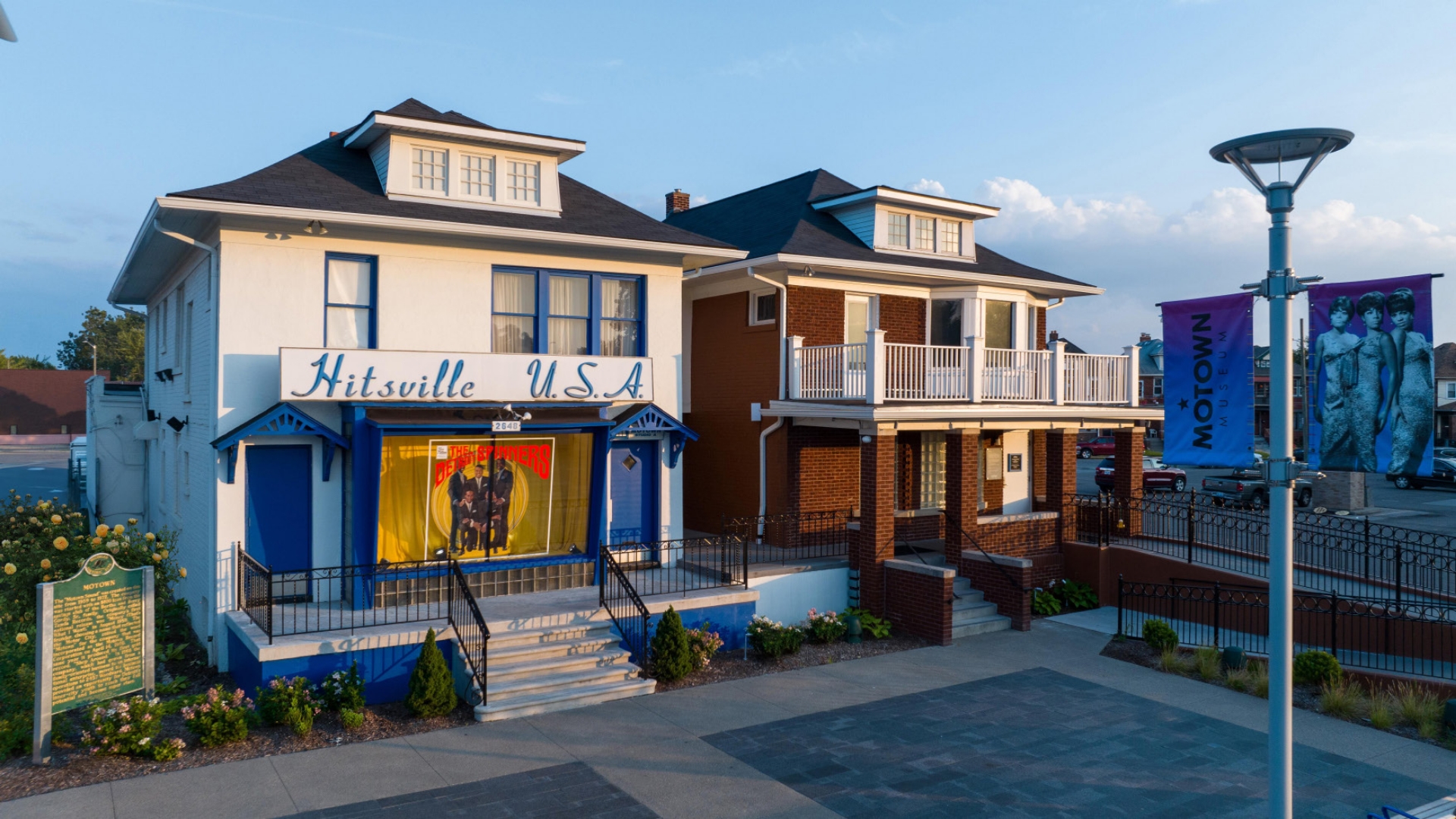
“The Detroit Motown Museum celebrates Black entrepreneurship and community,” says Meg Griffith, media relations manager at Visit Detroit. “What started as a house on West Grand Boulevard transformed into an international music empire that has had impact and influence for generations.”
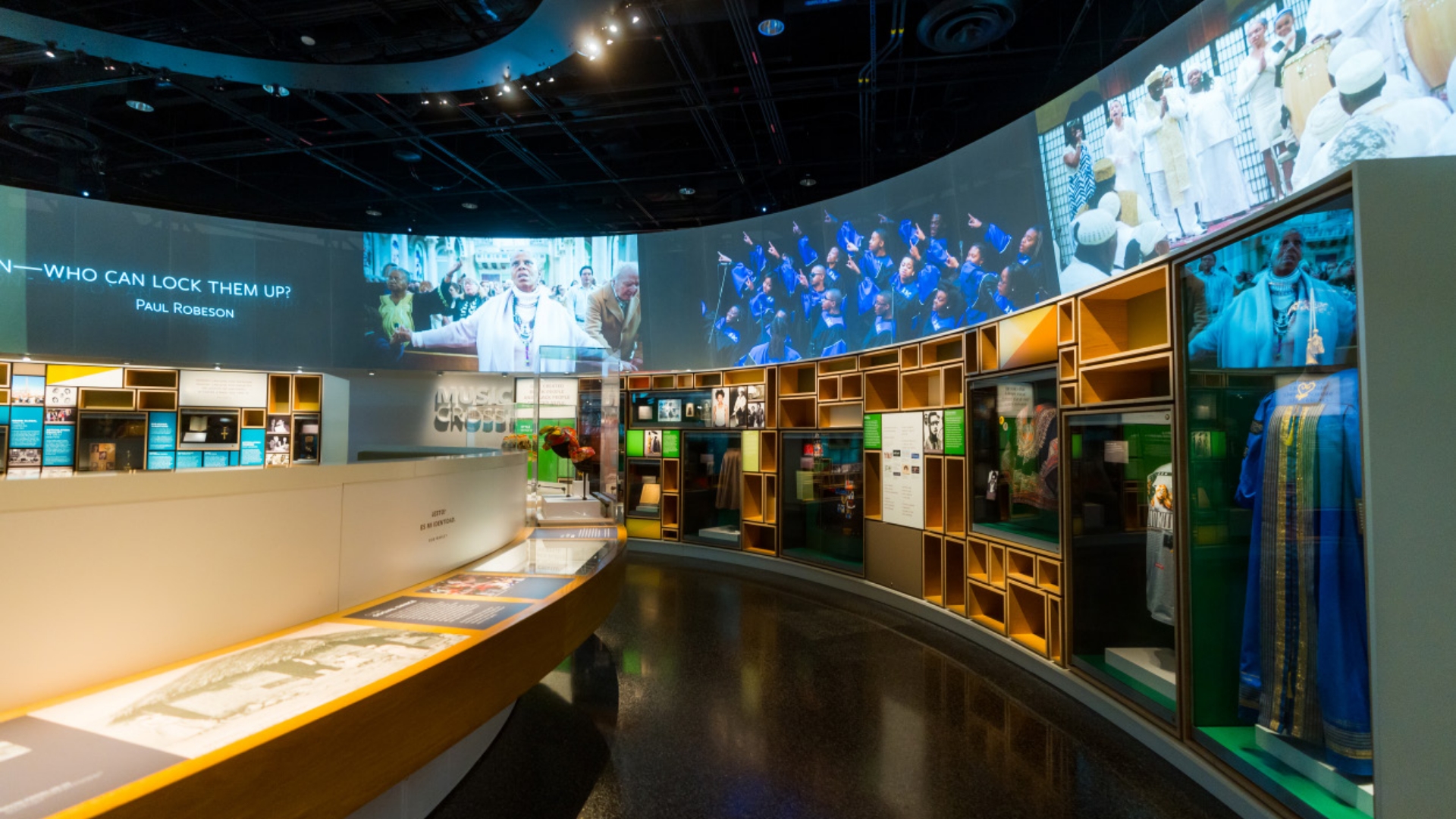
See thousands of artifacts and explore interactive exhibits at the National Museum of African American History and Culture in Washington, D.C.
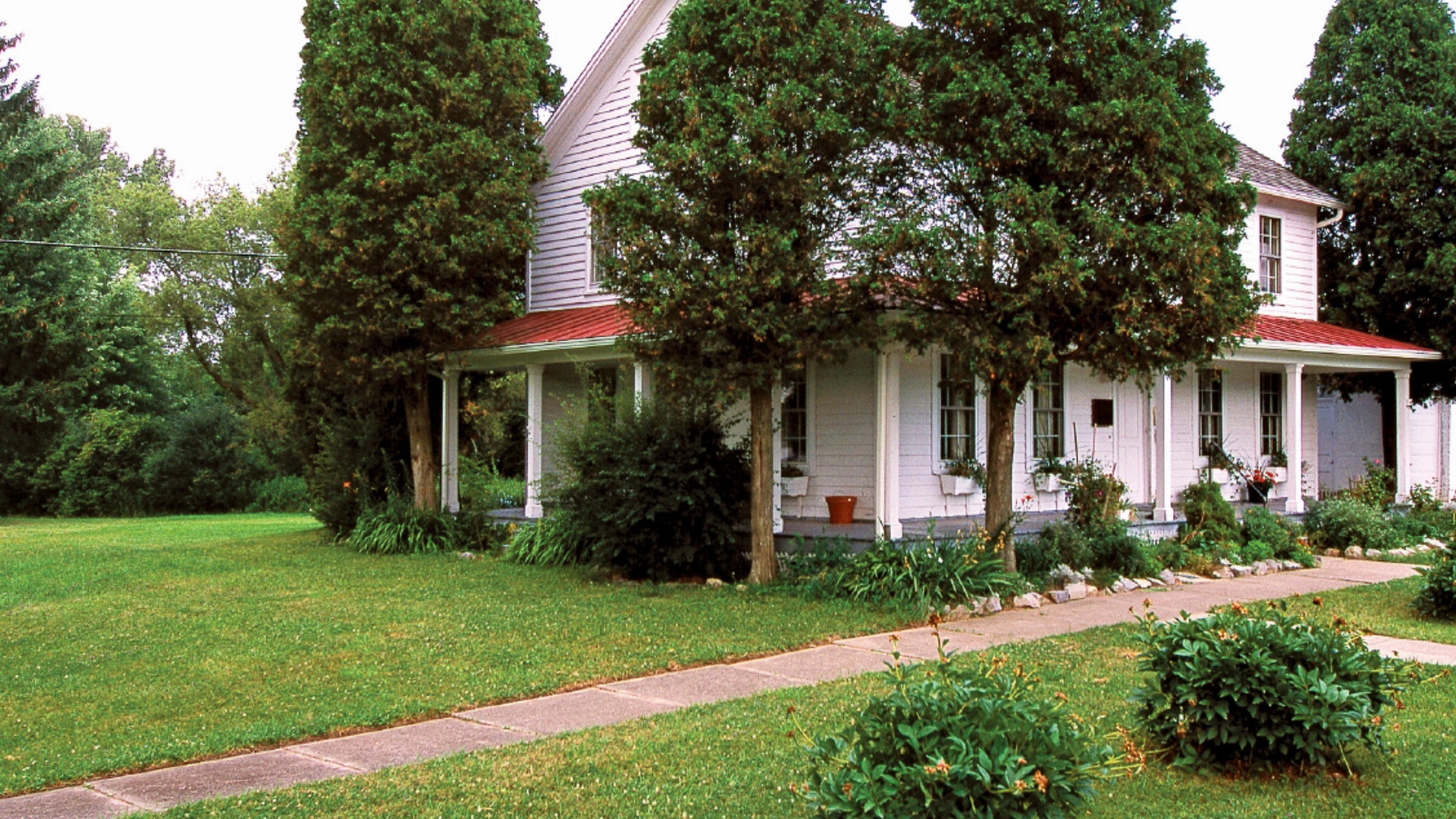
The Harriet Tubman Home for the Aged is part of the 26-acre Harriet Tubman National Historical Park in Auburn, N.Y.
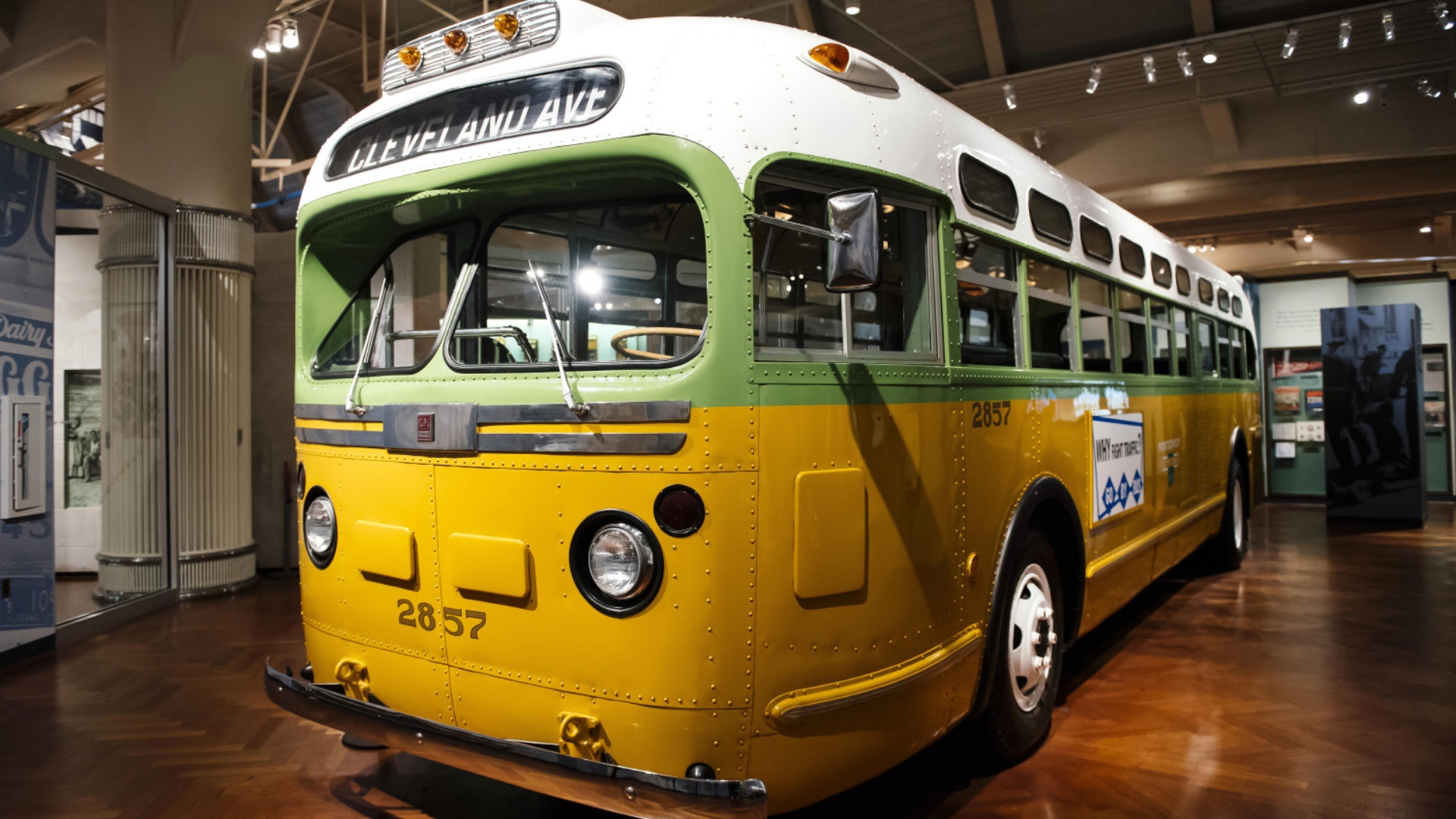
The restored bus in which Rosa Parks refused to give up her seat to a white man resides at the Henry Ford Museum near Detroit.
The Resurgence of Black Cultural Spaces
Many historically Black areas are being reclaimed and revitalized by Black communities—and they offer unparalleled experiences for group travelers interested in heritage travel.
Detroit Works to Reclaim a Neighborhood
In Detroit, the Black Bottom neighborhood was once a thriving hub of Black culture and entrepreneurship. The neighborhood was destroyed in the 1960s to make way for a freeway that displaced thousands of Black families—but efforts are now underway to reclaim this area. “It’s fascinating to go back in time and pay homage to some of these neighborhoods,” says Jennifer Miller, manager of domestic tourism at Visit Detroit. “There is conversation right now about taking out the highway and putting the neighborhood of Black Bottom back into the city of Detroit.” Groups interested in learning about Black Bottom can explore exhibits and archives at the Detroit Historical Museum and the Charles H. Wright Museum of African American History.
Birmingham Builds Up Black-Owned Businesses
Black communities in Birmingham continue to lead efforts in urban renewal and economic empowerment. The city’s Civil Rights District is not just a place of remembrance, but an ongoing project for education and advocacy. “We actively promote inclusivity by highlighting Black-owned businesses and encouraging their patronage,” says Hamlin. “These efforts are supported by collaboration with organizations that aim to revitalize historically Black commercial corridors, ensuring that these stories and spaces remain accessible to both locals and tourists.”
Washington, D.C., Invests in Black History
In Washington, D.C., historically Black neighborhoods like Anacostia, Shaw, Bloomingdale, and Mount Vernon are launching initiatives that highlight the contributions of the city’s Black residents. “These neighborhoods are steeped in Black history,” says Ferguson. In 2023, for example, the city unveiled the Anacostia Arts and Culture District. This was supported by a nearly $4 million grant for beautification projects, streetscape enhancements, support for cultural institutions, and programs that showcase local artists’ work.
For group travelers looking for a meaningful experience, African American heritage travel “highlights the amazing things Black people have done in America—these beautiful traditions from Africa we see every day in our own cultures, in our music, in our food, in society at large,” says Preddie. “You get to see how multicultural your country is, and how all of these different traditions make the phenomenal mosaic that is America.”
Related Resources
Immersive experiences are one of the most effective ways to engage travelers and connect them with the stories being told. See Martin Luther King Jr.’s Montgomery Bus Boycott Speech come to life in this newly released video from the Alabama Tourism Department. https://news.buses.org/experience-alabamas-civil-rights-era-one-movement-at-a-time
When exploring Black heritage travel, it’s important to acknowledge the different dimensions of social identity and how they intertwine. Destination DC’s President and CEO Elliott Ferguson comments on “Embracing Intersectionality in Group Travel.” https://news.buses.org/embracing-intersectionality-in-group-travel/
Tour operators interested in organizing African American cultural tours should heed the advice of Ross Levi, executive director of New York State’s Division of Tourism/I LOVE NY, in “How to Curate a Black Heritage Tour.” https://news.buses.org/how-to-curate-a-black-heritage-tour/
Planning a cultural heritage tour? Discover how “The Power of Black Art” fosters understanding and inspires change when you add these group-friendly music, visual arts, and festival experiences to your itinerary. https://news.buses.org/the-power-of-black-art/
Linda Formichelli has been a freelance writer since 1997. She lives in Raleigh, N.C.
Photo credits: Art Meripol; Natalie Preddie; Greater Birmingham Convention & Visitors Bureau; Courtesy of washington.org; Visit Detroit; ©NYSDED-Photo by Darren McGee

